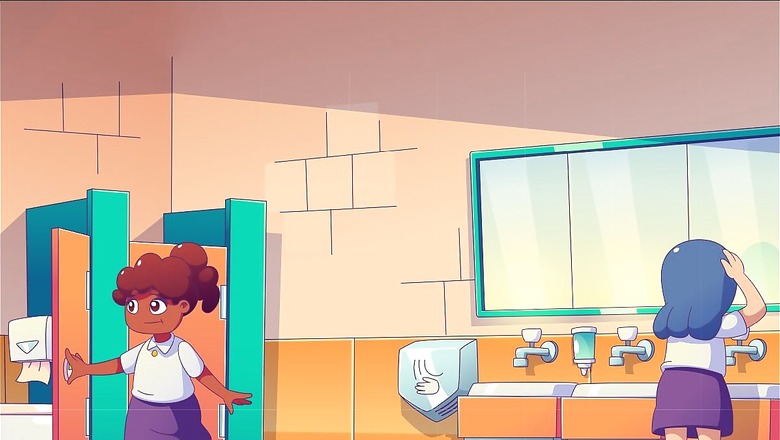
views
Toilet training is a developmental milestone that every child should achieve, but it can be a challenging process for children with special needs. Children with physical, cognitive, sensory, or behavioural disabilities may face difficulties in learning how to use the toilet independently and hygienically. Some of the common challenges include:
- Lack of awareness of bodily sensations or cues
- Fear or anxiety about using the toilet
- Resistance to change or new routines
- Difficulty in communicating needs or preferences
- Limited mobility or motor skills
- Sensory sensitivities or aversions
- Medical conditions that affect bladder or bowel control
These challenges can make toilet training stressful and frustrating for both the child and the caregiver. However, with patience, persistence, and a tailored approach, toilet training can be a positive and rewarding experience for everyone involved.
Tailored Approaches for Toilet Training
There is no one-size-fits-all method for toilet training children with special needs. Each child is unique and has different strengths, needs, and preferences. Therefore, it is important to customise the toilet training process according to the child’s individual characteristics and abilities. Some of the steps to take include:
Assessing the child’s readiness: Before starting toilet training, it is essential to assess whether the child is ready to learn this skill. Some signs of readiness include showing interest in the toilet, staying dry for longer periods, indicating discomfort when wet or soiled, following simple instructions, and being able to sit on the toilet.
Consulting with professionals: It is helpful to consult with the child’s paediatrician, therapist, teacher, or other professionals who are familiar with the child’s condition and development. They can provide valuable advice and guidance on how to address the specific challenges and barriers that the child may face during toilet training.
Choosing the right equipment: Depending on the child’s physical and sensory needs, it may be necessary to modify or adapt toilet equipment to make it more comfortable and accessible for the child. For example, some children may benefit from using a potty chair, a seat reducer, a step stool, a grab bar, or a padded seat. Others may prefer using disposable or cloth diapers, pull-ups, or underwear.
Establishing a routine: Having a consistent and predictable routine can help the child feel more secure and confident during toilet training. It is advisable to set a regular schedule for taking the child to the toilet, such as every hour or after meals and drinks. It is also important to use the same words and actions every time, such as saying “It’s time to go potty” and leading the child to the toilet.
Providing positive reinforcement: One of the most effective ways to motivate and encourage the child during toilet training (or building any other habit) is to provide positive reinforcement for their efforts and achievements. This can include verbal praise, hugs, stickers, rewards, or anything else that the child enjoys or values. It is also crucial to avoid scolding, punishing, or shaming the child for accidents or mistakes, as this can prove counterproductive by provoking shame and guilt in the child.
Adjusting as needed: Toilet training is not a linear process, and there may be setbacks or plateaus along the way. It is normal for children to regress or resist at times, especially when they are faced with changes or stressors in their environment. It is important to be flexible and patient, and to adjust the toilet training plan as needed. For example, some children may need more reminders, prompts, or assistance than others. Some may need more time or practice than others. Some may need more breaks or distractions than others.
Setting Children Up To Succeed
While this is applicable to all children, it is even more so in the case of children with special needs. Consistency is key, and if you can create similar environments between school and home, it is easier for children to adapt. Each child is different, but there are certain basic design modifications that can make toilets accessible for everyone.
Harpic and News18’s Mission Swachhta aur Paani has, for 3 years now, championed the cause of inclusive sanitation, equality for all genders, abilities, castes and classes and the strong belief that clean toilets are a shared responsibility.
Mission Swachhta aur Paani serves as a platform to bring together stakeholders across government, donors, NGOs, private sector, activists and others, so they can think through and act on the most pressing problems around toilet hygiene and access. Under the aegis of Mission Swachhta aur Paani, Harpic has also partnered with Sesame Workshop India, an educational non-profit, to promote positive sanitation, hygiene knowledge and behaviours among children and families through schools and communities, engaging with 17.5 million children across India.
Moreover, Mission Swachhta aur Paani serves as a valuable repository of information – should you need to campaign for changes at your child’s school, you’ll find enough information regarding toilet access and toilet hygiene to empower you to make the argument with confidence.
Societal change can be slow, but as we have seen with the Swachh Bharat Mission, it can also be far reaching. Since the success of the Swachh Bharat Mission, there is much greater awareness around toilet hygiene and access, and the difficulties faced by different groups of users. This awareness paves an easier path towards change, should you choose to champion it.
Every single campaign, every single social media post, every email, every conversation makes a difference. Join us here, so you can join your voice and actions to ours, and help us accelerate India’s journey towards a Swasth and Swachh Bharat.




















Comments
0 comment